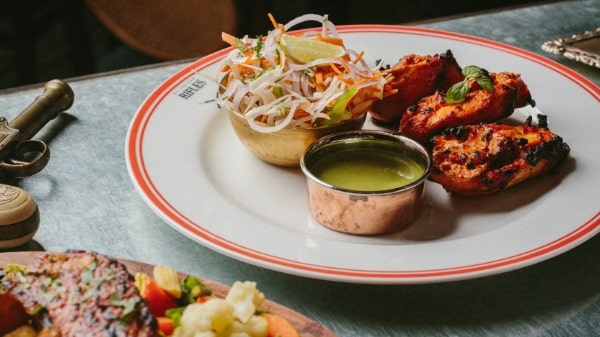There’s one thing to be said about Black Sheep Restaurants – they don’t seem to shy away from experimenting with super-niche cuisines. And the Anglo-Indian cuisine on offer at one of their latest restaurants, Rajasthan Rifles, is as niche as it gets.
While Indian cuisine has taken the world by storm and is readily available in most cities, from Osaka to Oakland, it’s mainly the ‘butter chicken’ variety of mainstream Indian food that is served in most restaurants. But as any true lover of Indian cuisine would know, India’s famous culture of diversity is nowhere more manifest than in its rich and wide-ranging culinary heritage of which Anglo-Indian cuisine is an integral part.

So what is Anglo-Indian cuisine? Simply put, it’s an amalgamation of English fare and Indian food, that came into being during the colonial era when India was still being ruled by the British. One of the first places that these two cuisines met was in the army. In the 1920s, the British Indian Army stationed in the subcontinent started accepting officers of Indian heritage and the mess halls started creating a unique kind of cuisine that would serve both palates.
Rajasthan Rifles, set in The Peak, takes its inspiration not just from this particular cuisine, but also from the mess halls that they originated from. Borrowing heavily from army hall vibes, the restaurant features stark minimalistic decor, complete with such details as rattan chairs and lockers underneath banquette seats that give a knowing nod to colonial times.

Moving on to the menu then, Chef Palash Mitra, of New Punjab Club fame, has been tasked to curate it and, given his long experience as chef at the London-based Anglo-Indian cuisinary Gymkhana, he seems more equipped than most for the job at hand. Eager to test his expertise, we started with the first course, Keema Anda Pau, the Indian equivalent of burger with scrambled eggs and slow-cooked mutton, served here with buttered milk buns and finely chopped onions, chili and lime. A staple snack sold by street vendors in India, here the dish is elevated by the savoriness of the minced meat combined with the mild sweetness of the buns. It’s a simple enough dish, but it made us even more eager to find out how the rest of the dinner would shape up.

The next dish to come tablewards was Chicken Tikka, a dish almost synonymous with Indian cuisine. Perhaps as a flip side to that, any Indian cuisinary worth its salt is sure to offer chicken tikka on its menu, and frankly, we had thought we’ve had all the good, bad and ugly versions possible of this item. But that was before we tasted the rendition at Rajasthan Rifles. Chef Mitra expertly enhances the flavours of the chicken by marinating it in yoghurt, ground chillies and mustard, and then chars it just enough for the exterior to be smoky while the inside is juicy and tender. However, in a bid to be as authentic as possible to the Indian palate, it’s unapologetically spicy and made even more so by the tart coriander chutney.

The other indubitable highlight of the evening was the Salmon Sizzler, featuring seared Bakkafrost salmon served with fries and vegetables. Here again, the fish was charred perfectly on the outside, while the soola spices added a spicy undertone to its tender texture that almost literally melted in our mouth.
Those looking for vegetarian options, meanwhile, may try the Dum Aloo Gunpowder, a special potato dish that would be quite a common item in officers’ canteens of yesteryears. As anyone au fait with Indian cuisine would tell you, any dish with the intriguing-sounding ‘gunpowder’ condiment tends to be on the spicy side, but Rajasthan Rifles’ potato curry is disarmingly mild-flavoured, despite the sprinkling of the potent gunpowder.

For dessert, we tried the Lemon Posset, a velvety lime-flavoured cream served alongside a generous helping of grapefruit, cherries and other fruits, all simply simpatico with the citrus notes of the dessert. By this time, though, it’s hardly a surprise to us, because we had come to expect nothing less from Rajasthan Rifles, which has not only taken a careful aim at representing the ‘East-meets-West’ culinary tradition, but has also hit a perfect bull’s eye.
Text: Suchetana Mukhopadhyay



